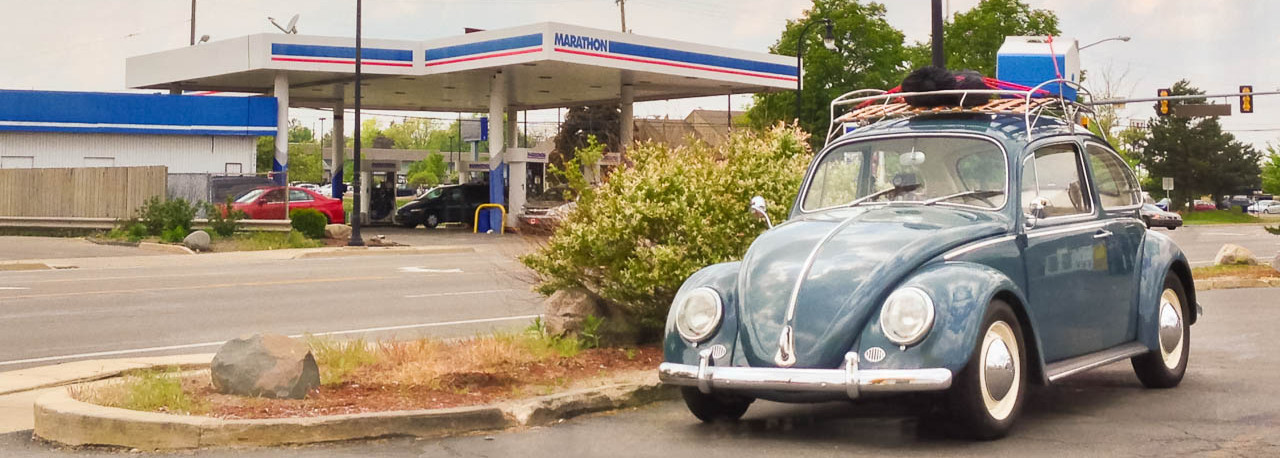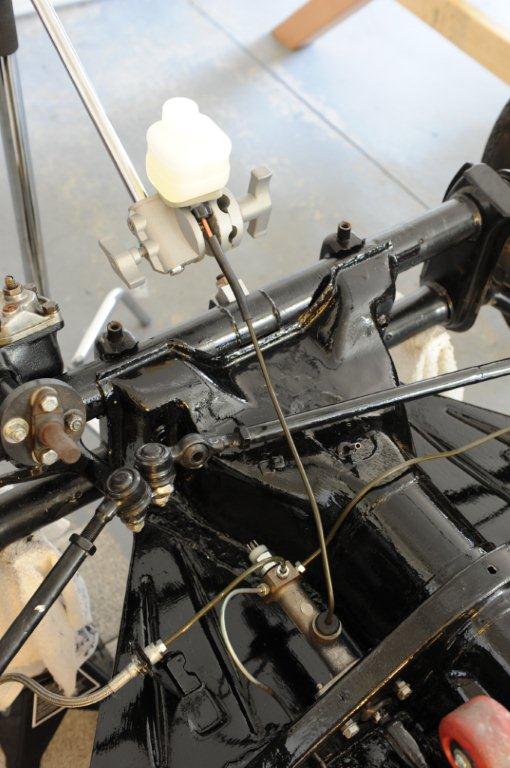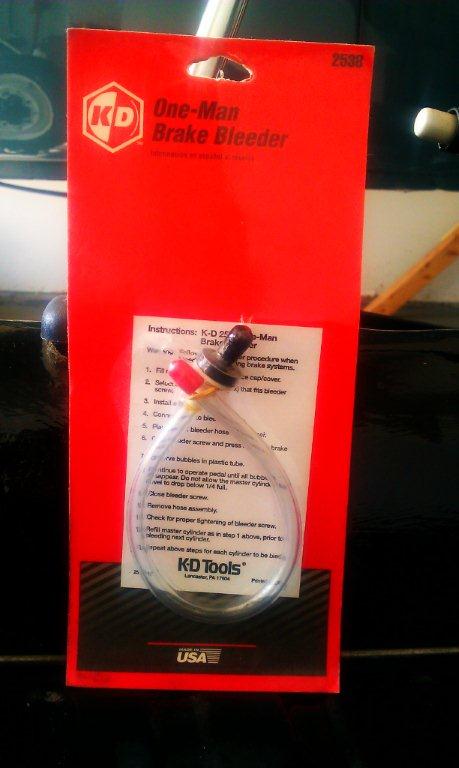I bled the brakes today. I did this because I wanted to make sure the braking system was solid prior to putting the body back on (the brake lines haven’t had brake fluid in them since I owned the vehicle). I figured it would be easier to work on with the body off if anything was not functioning properly. Since the fluid reservoir is typically mounted to the body, I had to figure out a way to hook it all up while the body was removed. I used a Century Stand (C-Stand) to hold the brake fluid reservoir (see pictures). C-Stands are great tools for photography and film making. It’s amazing how often I’ve used mine as a 3rd or 4th hand while working on my VW’s.
I realize I’ll need to unhook the brake fluid reservoir prior to putting the body back on. Afterward, I’ll need to bleed the brakes again since detaching it and reattaching it to the master cylinder will probably introduce some air bubbles to the system. At least I’ll know I can bleed the brakes again and feel confident everything is in working order.
I used a tool called the “One Man Brake Bleeder” to help me bleed the brakes. This thing worked great, and I highly recommend it. It’s basically a clear plastic tube that you put over the wheel cylinder bleeder valve. At the other end of the tube is a one way stop valve, which only lets fluid/air go in one direction (out). You can see any bubbles in the fluid through the clear plastic tube. Just hook it up, open the bleeder valve, and slowly start pumping the brake pedal, while keeping an eye on the clear plastic tube. Make sure you don’t empty your brake fluid reservoir too, otherwise you’ll let air into the brake lines again.
The brake system seems to have bled out beautifully, and everything seems to be in great working order. =)
Here are some pics:


